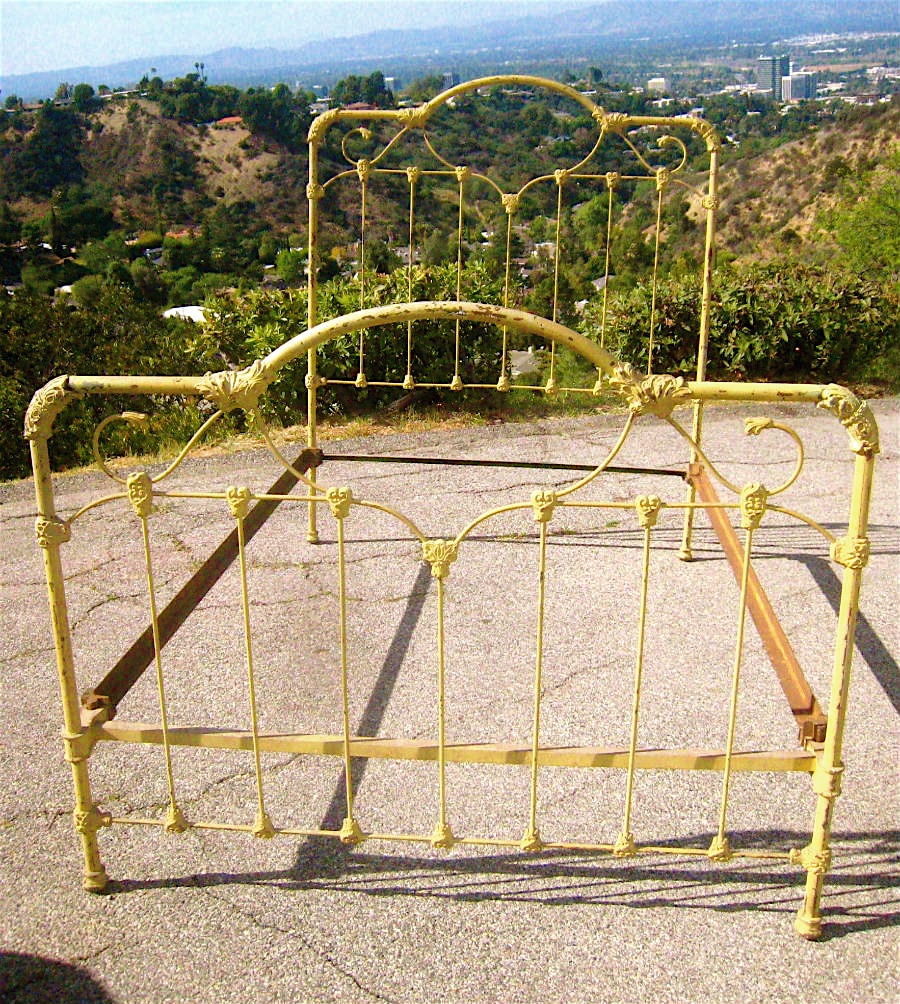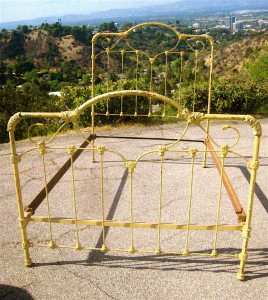Yellow is sunshine. It is a warm color that, like red, has conflicting symbolism. On the one hand it denotes happiness and joy. but on the other hand yellow is the color of cowardice and deceit.
Yellow is one of the more popular colors being used on iron beds back in the 1800’s. Because of the high visibility of bright yellow, it is often used for hazard signs and some emergency vehicles. Yellow is cheerful.
For years yellow ribbons were worn as a sign of hope as women waited from their men to come marching home from war. Today, they are still used to welcome home loved ones.
Back in the 1800’s ” Yellow” symbolized fresh new beginnings, like the dawn of a new day. Bed manufacturers used it for very similar reasons. Couples starting a new life together were often given a bed that was painted yellow as just such a “new beginnings” theme.
As time went on and the new yellow paint originally placed on the bed began to age , a beautiful “mustard yellow” would start to appear. Certain chemical changes in the lead base paint slowly turned the bright yellow to a more “mustard” color. We look at some of the old colors, such as mustard yellow from the 1800’s that were used on beds and think what great taste those foundries and manufactures must have had. Well …… not wanting to take anything away from our predecessors, many of the great pastels and even reds, greens and blues, didn’t start out the way we see them today on antique iron beds. They started as much more fresh primary bold colors and over 150 to 200 years the chemical makeup in the lead based paint morphed into the incredible colors we see today.
I’ve had many beds that were painted in “Barn Red”. Most of those , just as the barns, started with a primary red that aged over time to the color we now consider to be “Barn Red”.
One of the more popular “greens” that we see today, came about as a result of paint that actually started as blue and the yellow that was mixed to achieve it, aged at a much faster rate.
Although when refinishing an antique iron bed today, the first thing we do is to sandblast off all the old “toxic” lead base paint. But then quite often we like to try and mimic the aged paint we just eliminated, with water base pastels that won’t age or bare the “toxic” element the old ones did.
I hope you’ve found this blog informative . I invite you to revisit my website
to answer any and all questions you might have about antique iron beds.
I also invite you to take a look at our company Face Book page for multiple photo albums on Custom Finishes, Canopy Conversions and a comprehensive “Before & After” King Conversions album.








